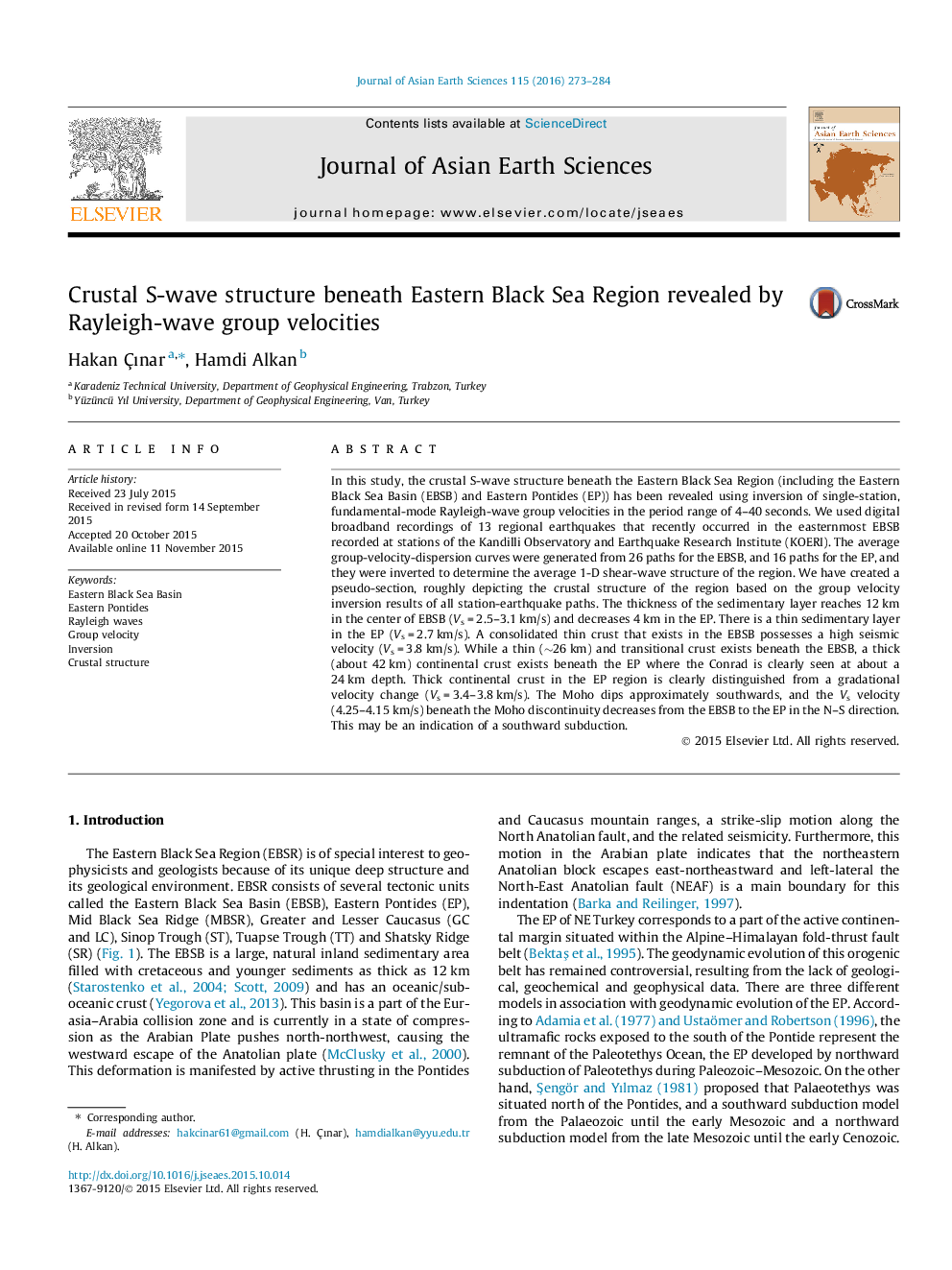| کد مقاله | کد نشریه | سال انتشار | مقاله انگلیسی | نسخه تمام متن |
|---|---|---|---|---|
| 6443992 | 1640356 | 2016 | 12 صفحه PDF | دانلود رایگان |
عنوان انگلیسی مقاله ISI
Crustal S-wave structure beneath Eastern Black Sea Region revealed by Rayleigh-wave group velocities
دانلود مقاله + سفارش ترجمه
دانلود مقاله ISI انگلیسی
رایگان برای ایرانیان
کلمات کلیدی
موضوعات مرتبط
مهندسی و علوم پایه
علوم زمین و سیارات
زمین شناسی
پیش نمایش صفحه اول مقاله

چکیده انگلیسی
In this study, the crustal S-wave structure beneath the Eastern Black Sea Region (including the Eastern Black Sea Basin (EBSB) and Eastern Pontides (EP)) has been revealed using inversion of single-station, fundamental-mode Rayleigh-wave group velocities in the period range of 4-40 seconds. We used digital broadband recordings of 13 regional earthquakes that recently occurred in the easternmost EBSB recorded at stations of the Kandilli Observatory and Earthquake Research Institute (KOERI). The average group-velocity-dispersion curves were generated from 26 paths for the EBSB, and 16 paths for the EP, and they were inverted to determine the average 1-D shear-wave structure of the region. We have created a pseudo-section, roughly depicting the crustal structure of the region based on the group velocity inversion results of all station-earthquake paths. The thickness of the sedimentary layer reaches 12 km in the center of EBSB (Vs = 2.5-3.1 km/s) and decreases 4 km in the EP. There is a thin sedimentary layer in the EP (Vs = 2.7 km/s). A consolidated thin crust that exists in the EBSB possesses a high seismic velocity (Vs = 3.8 km/s). While a thin (â¼26 km) and transitional crust exists beneath the EBSB, a thick (about 42 km) continental crust exists beneath the EP where the Conrad is clearly seen at about a 24 km depth. Thick continental crust in the EP region is clearly distinguished from a gradational velocity change (Vs = 3.4-3.8 km/s). The Moho dips approximately southwards, and the Vs velocity (4.25-4.15 km/s) beneath the Moho discontinuity decreases from the EBSB to the EP in the N-S direction. This may be an indication of a southward subduction.
ناشر
Database: Elsevier - ScienceDirect (ساینس دایرکت)
Journal: Journal of Asian Earth Sciences - Volume 115, 1 January 2016, Pages 273-284
Journal: Journal of Asian Earth Sciences - Volume 115, 1 January 2016, Pages 273-284
نویسندگان
Hakan Ãınar, Hamdi Alkan,